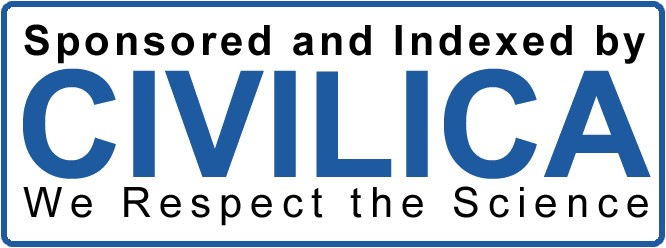Challenges of Artificial Intelligence in Violating Human Rights and Possible Solutions with Emphasis on the International Convention on Artificial Intelligence
Keywords:
Artificial intelligence, human rights, privacy, discrimination, freedom of expressionAbstract
Artificial intelligence (AI) and human rights are among the topics that play an increasingly significant role in contemporary human life. Alongside all its advantages, AI also poses risks to human rights. Accordingly, the present article aims to examine the challenges of AI in violating human rights and possible solutions, with emphasis on the International Convention on Artificial Intelligence. This article adopts a descriptive-analytical approach. The findings indicate that AI can lead to violations of rights such as privacy. With the advancement of AI, vast amounts of individuals’ data are collected and analyzed, which may result in breaches of the right to privacy. Moreover, AI and algorithms can, in certain cases, produce discriminatory outcomes based on gender, race, ethnicity, or other personal characteristics. Challenges posed by AI to freedom of expression, labor rights, accountability and responsibility, and the rule of law are other manifestations of AI-related threats to human rights. Legislative measures in the field of AI, transparency regarding the methods and algorithms used, enhancement of personal privacy and freedoms protection, and the necessity of drafting specific international regulations on AI are among the most important solutions to address AI-related human rights violations. In this regard, the International Convention on Artificial Intelligence effectively serves as a complementary framework to existing international standards on human rights, democracy, and the rule of law, aiming to fill any legal gaps that may arise from the rapid technological advancements driven by AI.
References
Abouzari, M. (2023). Application of Artificial Intelligence in Solving Family Law Issues. Biannual Journal of Jurisprudence and Media Law Studies, 5(1), 177-189. https://www.researchgate.net/publication/384292618_karbrd_hwsh_msnwy_dr_hl_msayl_hqwq_khanwadh_Application_of_artificial_intelligence_in_solving_family_law_issues
Asadpour, F., Pahlavanzadeh, A., & Khandani, P. (2023). The Impact of Legal Developments in Artificial Intelligence on Intellectual Property Law. Legal Policy Journal, 20(4), 131-147. https://sanad.iau.ir/en/Article/1105176?FullText=FullText
Atazadeh, S., & Ansari, J. (2019). Re-examining the Concept of Criminal Responsibility in AI. Comparative Research Journal of Islamic and Western Law, 6(4), 55-86. https://www.sid.ir/paper/262179/en
Azizi Alavije, M. (2023). Comparative Study of Artificial and Natural Intelligence from Avicenna's Perspective with Emphasis on Legal Responsibility. Philosophy of Law Quarterly, 2(1), 227-246. https://phlq.bou.ac.ir/article_75155.html?lang=en
Bakhtiari, M. (2021). The Use of Artificial Intelligence in Judicial Processes from the Perspective of International Human Rights Law with Emphasis on European Institutions' Measures Allameh Tabataba'i University, Faculty of Law and Political Science]. Tehran. https://wikihoghoogh.net/wiki/%D8%A7%D8%B3%D8%AA%D9%81%D8%A7%D8%AF%D9%87_%D8%A7%D8%B2_%D9%87%D9%88%D8%B4_%D9%85%D8%B5%D9%86%D9%88%D8%B9%DB%8C_%D8%AF%D8%B1_%D9%81%D8%B1%D8%A2%DB%8C%D9%86%D8%AF_%D9%82%D8%B6%D8%A7%DB%8C%DB%8C_%D8%A7%D8%B2_%D9%85%D9%86%D8%B8%D8%B1_%D8%AD%D9%82%D9%88%D9%82_%D8%A8%DB%8C%D9%86_%D8%A7%D9%84%D9%85%D9%84%D9%84_%D8%A8%D8%B4%D8%B1_%D8%A8%D8%A7_%D8%AA%D8%A7%DA%A9%DB%8C%D8%AF_%D8%A8%D8%B1_%D8%A7%D9%82%D8%AF%D8%A7%D9%85%D8%A7%D8%AA_%D9%86%D9%87%D8%A7%D8%AF%D9%87%D8%A7%DB%8C_%D8%A7%D8%B1%D9%88%D9%BE%D8%A7%DB%8C%DB%8C
Balhara, A., Ubba, S., Sharma, Y., & Chawla, P. (2020). Exploring and Analyzing Dark Web. International Institute of Research and Studies, 3(25), 1-5. https://doi.org/10.2139/ssrn.3879619
Balouch Fard, N. (2022). Natural Language Processing and Analysis of Legal Data in Cases and Forensic Reports Using Artificial Intelligence. Journal of Modern Interdisciplinary Legal Research, 2(1), 59-65. https://ensani.ir/fa/article/505061/
Elsan, M., & Dehestani, S. (2022). Legal Aspects of Deepfake. Legal Research Quarterly, 25(100), 193-218. https://lawresearchmagazine.sbu.ac.ir/article_103035.html?lang=en
Eubanks, V. (2018). Automating Inequality: How High-Tech Tools Profile, Police, and Punish the Poor (1st ed.). St. Martin's Press. https://books.google.com/books/about/Automating_Inequality.html?id=pn4pDwAAQBAJ
Floridi, L. (2014). The Fourth Revolution: How the Infosphere is Reshaping Human Reality (1st ed.). Oxford University Press. https://books.google.com/books/about/The_Fourth_Revolution.html?id=hOF_AwAAQBAJ
Hakim, S. M., & Ebrahimi, S. H. (2023). Jurisprudential and Legal Examination of the Deprivation of Citizen Security in Artificial Intelligence. Journal of Islamic Law and Jurisprudence Research, 19(72), 74-101. https://journals.iau.ir/article_705642.html?lang=en
Haskel, J. (2023). International Law as Cyborg Science. Nordic Journal of International Law, 92(1), 9-30. https://doi.org/10.1163/15718107-bja10054
Javanbakht, M., Sadeghnezhad, R., & Yaghouti, E. (2023). Legal Response to the Emerging Phenomenon of Artificial Intelligence from the Perspective of Recent European Legal Initiatives. Contemporary Legal Thought Journal, 4(4), 1-14. https://www.lthjournal.ir/article_711056.html?lang=en
Javdani Zaman, M.-A. (2022). The Necessity of Developing Legal Standards for Artificial Intelligence in the Context of International Human Rights Law Shiraz University, Faculty of Electronic Education]. Shiraz.
Maghrebi Gerdroodbari, M., Dadashi, I., Mohseni Maleki, B., & Zabihi, A. (2023). Predicting Tax Evasion by Legal Entities with Emphasis on Economic Factors, Taxpayers and Auditors Using AI. Tax Research Journal, 31(106), 131-164. https://doi.org/10.61186/taxjournal.32.58.6
Mostafavi Ardabili, S. M. M., Taghizadeh Ansari, M., & Rahmati Far, S. (2022). Functions and Requirements of AI from the Perspective of Fair Trial. International Law Journal, 3(6), 47-60. https://mtlj.usc.ac.ir/article_160785_en.html
Nikandish, M., Moradi, M. A., & Payan, A. (2022). The End of Rule-Based AI Approach in Analyzing Factors Affecting Tax Adjustment for Legal Entities in Tax Litigation System (Case Study of South Khorasan Tax Affairs). Governmental Accounting Journal, 8(1), 175-194. https://gaa.journals.pnu.ac.ir/article_8106.html?lang=en
Panser, E. (2011). The Filter Bubble: What the Internet Is Hiding from You (1st ed.). Penguin Press. https://books.google.com/books/about/The_Filter_Bubble.html?id=-FWO0puw3nYC
Rahbari, E., & Shabanpour, A. (2022). Challenges of Employing AI Judges in Civil Litigation. Legal Research Quarterly, 25(100), 419-444. https://lawresearchmagazine.sbu.ac.ir/article_102915.html?lang=en
Seifi, A., & Razmkhah, N. (2021). Securing and Implementing Women's Right to Employment in Light of AI Development. Islamic human rights studies, 10(21), 153-180. https://www.pfbaj.ir/article_139413.html?lang=en
Sheikhvand, M. S., Kordalivand, R., Minaee, B., Ashouri, M., & Mahdavi Sabat, M. A. (2023). Comparative Study of AI Applications in Criminal Prosecution - Capabilities and Challenges. Comparative Law Research Journal, 12(27), 81-104. https://clr.modares.ac.ir/article-20-67385-en.html
Tahmasbi, M. R. (2006). Extreme Narratives of AI and the Problem of Mind's Opacity. Mofid Journal, 12(2), 81-94. https://www.magiran.com/paper/402733/artificial-intelligence-a-revised-evaluation?lang=en
Valipour, A., & Esmaili, M. (2021). Feasibility Study of Civil Liability of General AI for Damages in Civil Law. Contemporary Legal Thought Journal, 2(3), 1-16. https://www.lthjournal.ir/article_248596.html
Vaseghi, M. (2020). Feasibility Study of Granting Legal Personality to Intelligent Robots Based on EU Regulations. Majlis Strategy Quarterly, 27(103), 307-333. https://nashr.majles.ir/article_391.html
Zakeri Nia, H. (2023). The Nature and Basis of Civil Liability Arising from Artificial Intelligence in Iranian Law and EU Countries. Private Law Journal, 20(42), 135-152. https://jolt.ut.ac.ir/article_92421.html?lang=en
Downloads
Published
Submitted
Revised
Accepted
Issue
Section
License
Copyright (c) 2025 Fatemeh Sadat Ghoreishi Mohammadi (Corresponding author); Ramin Faghani (Author)

This work is licensed under a Creative Commons Attribution-NonCommercial 4.0 International License.








